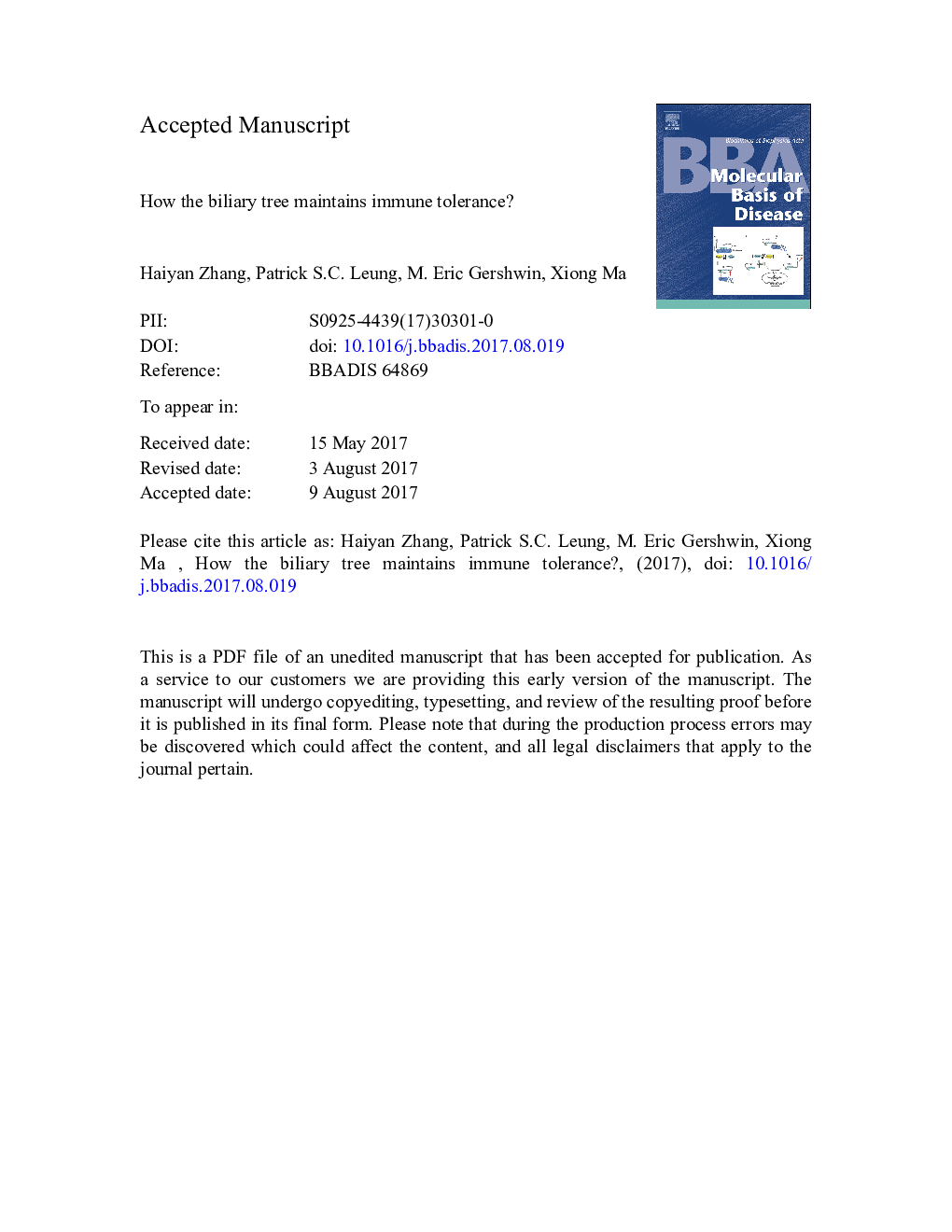| Article ID | Journal | Published Year | Pages | File Type |
|---|---|---|---|---|
| 8258519 | Biochimica et Biophysica Acta (BBA) - Molecular Basis of Disease | 2018 | 28 Pages |
Abstract
The liver is a vital organ with distinctive anatomy, histology and heterogeneous cell populations. These characteristics are of particular importance in maintaining immune homeostasis within the liver microenvironments, notably the biliary tree. Cholangiocytes are the first line of defense of the biliary tree against foreign substances, and are equipped to participate through various immunological pathways. Indeed, cholangiocytes protect against pathogens by TLRs-related signaling; maintain tolerance by expression of IRAK-M and PPARγ; limit immune response by inducing apoptosis of leukocytes; present antigen by expressing human leukocyte antigen molecules and costimulatory molecules; recruit leukocytes to the target site by expressing cytokines and chemokines. However, breach of tolerance in the biliary tree results in various cholangiopathies, exemplified by primary biliary cholangitis, primary sclerosing cholangitis and biliary atresia. Lessons learned from immune tolerance of the biliary tree will provide the basis for the development of effective therapeutic approaches against autoimmune biliary tract diseases. This article is part of a Special Issue entitled: Cholangiocytes in Health and Disease edited by Jesus Banales, Marco Marzioni, Nicholas LaRusso and Peter Jansen.
Keywords
IFN-γCholangiocytesPBCAILDMDA-5RIG-1RRVPRRsBECsCX3CR1SV40DCsPPARγPSCHuman β-defensinsGvHDLPSMYD88HbdCX3CL1PAMPsMCP-1PANCAprimary biliary cholangitissIgATLRsAntinuclear antibodiesANABiliary atresiainterferon-γautoimmune liver diseasesimmune toleranceSecretory IgAEMTBiliary treeRhesus rotavirusnatural killer T cellsDendritic cellsNKT cellsbiliary epithelial cellscytomegalovirusCMVmyeloid differentiation factor 88IRAK-1fractalkineTRAILlipopolysaccharideTNF-related apoptosis-inducing ligandSimian virus 40pathogen associated molecular patternsGraft versus host diseasePrimary sclerosing cholangitisEpithelial-mesenchymal transitionpattern-recognition receptorsToll-like receptorsperoxisome proliferator-activated receptor γ
Related Topics
Life Sciences
Biochemistry, Genetics and Molecular Biology
Ageing
Authors
Haiyan Zhang, Patrick S.C. Leung, M. Eric Gershwin, Xiong Ma,
